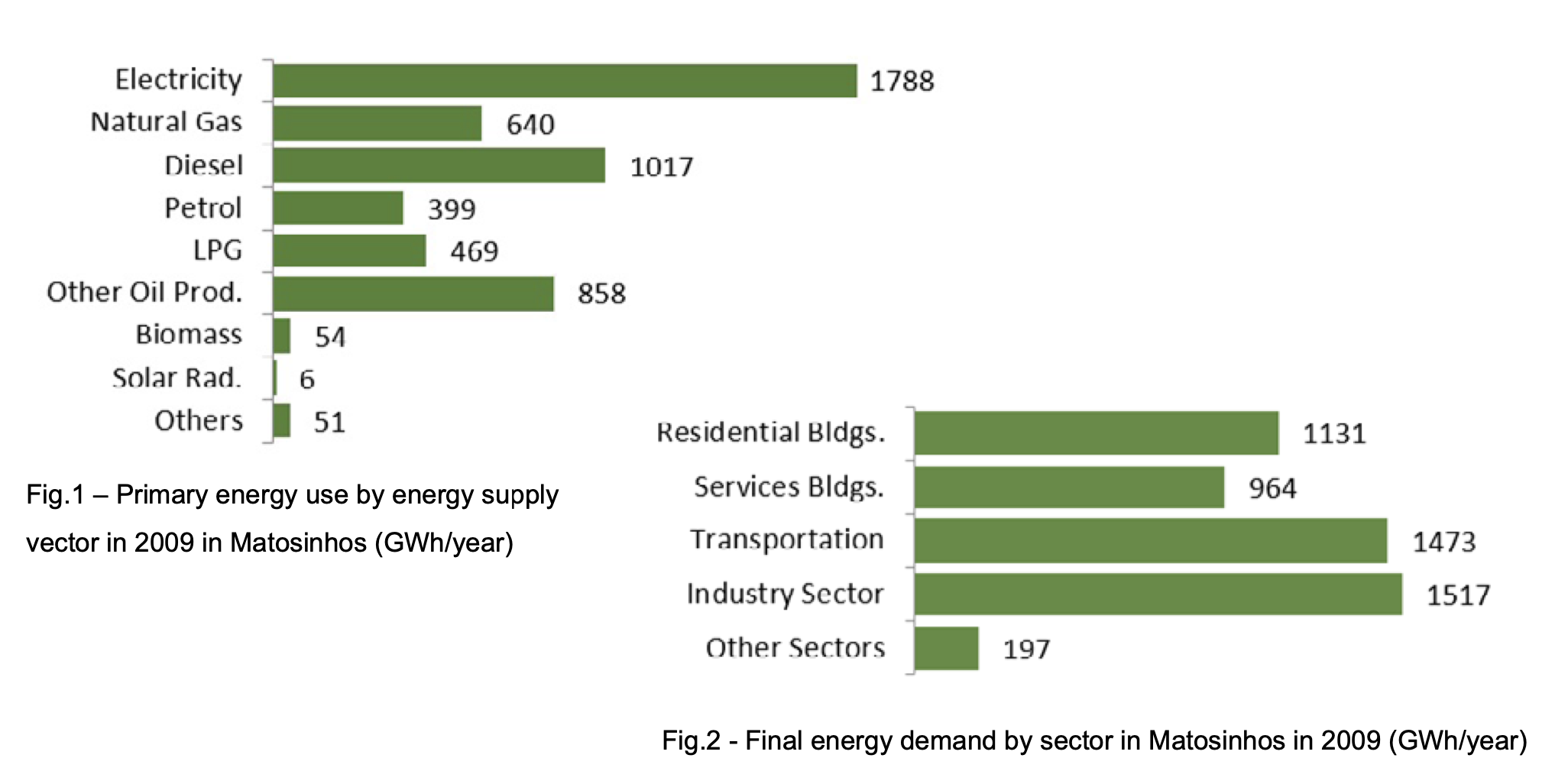Portugal
2017
- Type : Project
- Size : Local community
- Area : Industrial, Residential, Utility
Environmental benefit
Developing a renewable heating & cooling system in an unfavourable context
Share
Portugal
2017
- Type : Project
- Size : Local community
- Area : Industrial, Residential, Utility
Environmental benefit
Discover this use case online

Results from scenarios and policy assessment
While a number of technical solutions were explored for decarbonising the supply of heat and cold to the buildings analysed in Matosinhos, the individual solutions relying on heat pumps coupled with solar panels (PV, thermal or both) end up being significantly more expensive in terms of levelized costs than the district solutions.
So, while these might be easier to implement because they would not have to address the culture of individualism and because the investments would be split between multiple smaller parties, in the end the district heating and cooling solution would be preferable.
In particular, the DHC solution relying on the excess heat from the local oil refinery could not only make use of the heat that is currently being wasted there (thus improving its overall efficiency) but also supplying the cheapest heat and cold to large buildings (while keeping most of the maintenance and operation issues in a single central DHC network operator).
Recommendations and possible solutions
Preliminary modelling shows the clear potential for building a new DHC network in Matosinhos, using excess heat from the refinery or, alternati- vely, using heat produced from other renewable sources, to feed the growing business and com- mercial area currently being developed.
While such a project would certainly face difficul- ties in its implementation, namely in terms of buil- ding the whole required infrastructure, which tends to be quite disruptive in already-established urban areas, the involvement of local authorities is essential.
The first step to start building the business case for this solution is to bring together the relevant stakeholders in the region, helping overcome the cultural resistance to community solutions, to inform them of the conditions and advantages of the solution, mediating discussions and helping reach long-term consensus and guarantees. The municipality can further help the business case if it establishes zoning rules that promote the use of the DHC network by all buildings within its area of influence. With the involvement of key stakehol- ders and with the backup of the local authorities, investment will probably come along from other interested parties.
 R-ACES has received funding from the European Union’s Horizon 2020 research and innovation programme under grant agreement N° 892429
R-ACES has received funding from the European Union’s Horizon 2020 research and innovation programme under grant agreement N° 892429
Results from scenarios and policy assessment
While a number of technical solutions were explored for decarbonising the supply of heat and cold to the buildings analysed in Matosinhos, the individual solutions relying on heat pumps coupled with solar panels (PV, thermal or both) end up being significantly more expensive in terms of levelized costs than the district solutions.
So, while these might be easier to implement because they would not have to address the culture of individualism and because the investments would be split between multiple smaller parties, in the end the district heating and cooling solution would be preferable.
In particular, the DHC solution relying on the excess heat from the local oil refinery could not only make use of the heat that is currently being wasted there (thus improving its overall efficiency) but also supplying the cheapest heat and cold to large buildings (while keeping most of the maintenance and operation issues in a single central DHC network operator).
Recommendations and possible solutions
Preliminary modelling shows the clear potential for building a new DHC network in Matosinhos, using excess heat from the refinery or, alternati- vely, using heat produced from other renewable sources, to feed the growing business and com- mercial area currently being developed.
While such a project would certainly face difficul- ties in its implementation, namely in terms of buil- ding the whole required infrastructure, which tends to be quite disruptive in already-established urban areas, the involvement of local authorities is essential.
The first step to start building the business case for this solution is to bring together the relevant stakeholders in the region, helping overcome the cultural resistance to community solutions, to inform them of the conditions and advantages of the solution, mediating discussions and helping reach long-term consensus and guarantees. The municipality can further help the business case if it establishes zoning rules that promote the use of the DHC network by all buildings within its area of influence. With the involvement of key stakehol- ders and with the backup of the local authorities, investment will probably come along from other interested parties.
